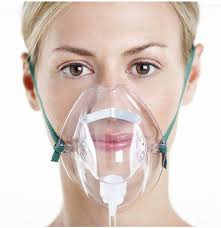 Oxygen masks are utilized to deliver supplemental oxygen to patients with hypoxemia or other conditions requiring increased oxygenation.
Oxygen masks are utilized to deliver supplemental oxygen to patients with hypoxemia or other conditions requiring increased oxygenation.
The primary uses and benefits of oxygen masks include:
Oxygen masks, such as the Venturi mask, are essential in managing patients with acute hypoxemia by providing precise oxygen delivery.
High concentrations of oxygen delivered via masks are crucial in treating conditions like carbon monoxide poisoning and decompression illness.
Studies have shown that non-rebreather masks and other high-flow oxygen systems can significantly increase arterial oxygen partial pressure (pO2) in these patients.
Preoxygenation and Apnoeic Oxygenation: In the perioperative setting, oxygen masks are used for preoxygenation before intubation.
Combining facemasks with high-flow nasal oxygen (HFNO) has been shown to improve oxygenation and reduce desaturation during apnoea, especially in obese patients.
In patients with severe respiratory conditions, such as those with COVID-19, oxygen masks like oxygen hoods/helmets can improve oxygen saturation and potentially reduce the need for mechanical ventilation.
The American Heart Association and American Red Cross recommend the use of supplementary oxygen in first aid for conditions like decompression sickness and hypoxemia in advanced cancer patients.
Oxygen masks are versatile tools in clinical practice, providing critical support in managing hypoxemia, specific toxic exposures, and during preoxygenation for intubation, thereby improving patient outcomes in various acute and chronic conditions.
